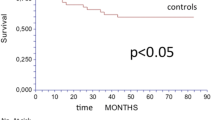Abstract
Although cancer surgery has been of great benefit to patients with large bowel cancer, a flaw that has caused the death of countless patients has gone unrecognized. Although surgeons have dealt successfully with the primary tumor, they have neglected to treat microscopic residual disease. Persistent cancer cells within the abdomen and pelvis are responsible for the death of 30–50% of the patients who die with this disease and for quality of life consequences that result from intestinal obstruction caused by cancer recurrence at the resected site and on peritoneal surfaces. New surgical techniques for large bowel cancer resection minimize the surgery-induced microscopic residual disease that may result from surgical trauma. New developments in exposure, hemostasis, adequate lymphadenectomy, and qualitatively superior margins of excision have occurred. Clinical data show that a 40% improvement in survival with an optimization of surgical technique is possible. Not only should the surgical event for primary colon and rectal cancer be optimized, but also the successful treatment of peritoneal carcinomatosis should be pursued. Resected site disease and peritoneal carcinomatosis can be prevented through the use of perioperative intraperitoneal chemotherapy in patients at high risk of persistent microscopic residual disease. These are patients with perforated cancer, positive peritoneal cytology, ovarian involvement, tumor spill during surgery, and adjacent organ involvement. Patients with established peritoneal carcinomatosis can be salvaged with an approximate 50% long-term survival rate if the timely use of peritonectomy procedures, intraperitoneal chemotherapy, and knowledgeable patient selection are utilized. Peritonectomy procedures allow the removal of all visible peritoneal carcinomatosis with acceptable surgical morbidity (25%) and mortality (1.5%) rates. Heated intraoperative intraperitoneal chemotherapy using mitomycin C, in addition to early postoperative intraperitoneal 5-fluorouracil, can eradicate microscopic residual disease in the majority of patients. The peritoneal cancer index, which quantitates colon cancer peritoneal carcinomatosis by distribution and by lesion size, must be used in the selection of patients who may benefit from these advanced oncologic surgical treatment strategies. The completeness of the cytoreduction score is the most powerful prognostic indicator in this group of patients. The surgeon must be aware that there are no long-term survivors unless complete cytoreduction occurs. With a combination of proper techniques for the resection of primary disease, peritonectomy procedures for the removal of all visible peritoneal implants, intraoperative and early postoperative chemotherapy for the eradication of microscopic residual disease, and quantitative tools for proper patient selection, one can optimize the surgical treatment of patients with large bowel cancer.
Similar content being viewed by others
Author information
Authors and Affiliations
Rights and permissions
About this article
Cite this article
Sugarbaker, P. Successful management of microscopic residual disease in large bowel cancer. Cancer Chemother Pharmacol 43 (Suppl 1), S15–S25 (1999). https://doi.org/10.1007/s002800051093
Issue Date:
DOI: https://doi.org/10.1007/s002800051093




